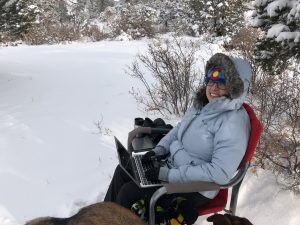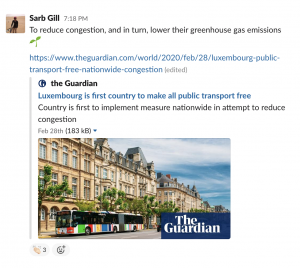This article has been updated to reflect some new options for businesses looking to move to a virtual and remote workplace. Global emergencies such as the COVID-19 (coronavirus) have made it all the more important that businesses are prepared to support their team through remote working options. The ATTA has been a virtual organization for the last 16 years; learn what tips and tools they use in their operations.

The daily routine of most of the team working for the Adventure Travel Trade Association (ATTA) looks something like this: wake up, drink coffee, meet with a team member across the globe, and then get properly dressed. Or perhaps it is exercise, breakfast and family obligations before settling in to a home desk or workspace. As a global organization with team members, consultants, partners, members, and advisors located in 16 countries around the world, perfecting the virtual workplace has been critical to our success, growth, and strong company culture.
What has the ATTA implemented to keep the wheels turning, create great team relationships, and maintain structure and accessibility? I want to share what we have learned along the way and so that you can consider how your team could be productive and happy working virtually. I’ve asked my ATTA colleague Jason Reckers, ATTA COO, to offer some of his insider tips too.
Top 10 Tips for Working Virtually
- Have a morning routine to get started. Act like you’re going somewhere. Set an alarm, get up at a regular time, take a shower, get dressed, and prepare to go about your day. You’ll feel more prepared and will find it easier to get into a work mindset. Pajamas or sweatpants sound great and feel comfortable, but you’ll be embarrassed when you accidentally stand up with the camera on.
- Have a plan. Even if the world feels like it is ending tomorrow, make a plan for the day. Keep a to-do list somewhere, digitally or in hard copy, whichever works best for you. If you truly have an empty to-do list (first, please send us proof of that), start thinking about future plans and goals.
- Be patient! Be patient with others and with yourself. You may be comfortable working from home and using remote work technology, but maybe not, and it is important to remember that your teammates’ skills and resources vary. Some members of your team may not have strong internet connections, and may not be as familiar with technology. Especially in an emergency situation when everyone is working from home, the internet can get overwhelmed. Have patience with others and support them as needed.
- Use the mute button. Especially when you’re on a call with more than one other person, the mute button helps reduce chaos and ensure each person can be heard in turn. Yet, be ready to turn it back on as fast as if you’re playing a video game. Otherwise, you’ll share your thoughts and feel like everyone is ignoring you.
- Keep it simple. Just like no one wants to sit through a two-hour in-person meeting, no one wants to be on a two-hour long conference call. Send out an agenda before the call and stick to it. Keep the invite list to people who truly need to be there. Start and end on time.
- Share your screen and collaborate. One of the best features of modern video conferencing software is the ability to work together in real-time. Most apps offer the capability to share your screen and work on projects or documents together. Not only does it help ensure everyone is on the same page, it can also help others on the call learn how to use those tools. Google Docs, another favorite solution of ATTA’s, is also great for collaborating with the rest of your team in real-time.
- Use video. If you completed tip 1 (you did, right?), you’ll be prepared for this at any time. Just like you might typically meet at a watercooler or in the breakroom, video calls can be scheduled or spontaneous. They can be informal, formal, or a mix of both to keep a balance of personal and professional discussions. Non-verbal cues are very important to personal discussions; smile, nod, acknowledge each other and be present, just like you would be in person.
- Don’t multi-task. Unless you’re truly taking notes, focus your full attention on the meeting and what is being said. Video (see tip 7) helps keep all attendees accountable, even when they may not be involved in the conversation at that particular moment. Calls are more effective and can be more concise and productive when everyone is engaged. Note, you’re not as sneaky as you may think. It is easy to see when someone is multi-tasking.
- Record the call. In case not everyone can attend the meeting, or items are being discussed that will need to be referred back to later, it is a good idea to record the call and post the link in a shared digital space. Most video conference apps offer this feature. It is also helpful to provide notes of the conversation and direct the listener to the minute and second (mm:ss) within the video where the point was discussed.
- Have a good mic and lighting. Small microphones are affordable and easy to find, and make a big difference in call quality. Your corded mobile phone headset is an easy solution that provides quality better audio than most built-in computer mics. Natural light is great, but be careful not to sit right in front of a window, as the camera will have trouble adapting and lighting you properly. If you are working in a darker space without natural light, small portable lamps are available that can provide a great light option. It’s also a good idea to include a background with some interesting and appropriate items that say something personal about you. If you’re working in a public place or don’t have a good workspace at home, many video conferencing apps offer attractive virtual background options.
The Key Remote Work Tools ATTA Uses
G Suite
G Suite (including Gmail, Drive, Docs, Sheets, and Slides) is home to all our files. Our team works exclusively in this space to create, edit, and organize documents, spreadsheets, presentations, and more. Team members access these files from any place in the world, and we can also share them easily with any partners or colleagues.Today, we have over 150,000 files stored on Google Drive, and we would estimate 85% of new files are first created by the team using Google Docs, Sheets, or Presentations. We still use Word, Excel, PowerPoint, Keynote, and other tools with the mindset that it’s okay to use the right tool at the right time. Yet, we still upload these files to Google Drive to make them available to others at a moment’s notice from anywhere in the world.
Asana
With many projects in the works and team working virtually around the world, having a good project management system is important. Asana is our present solution; it is a very flexible tool that is perfectly adapted to a virtual workforce, allowing our team to collaborate from across the globe. Files can be attached from Google Drive or an individual user’s computer, making them easily accessible to all. The multiple workspace views give users the option to see information presented as a task list, Kanban board, or calendar, and projects and tasks can be accessed and assigned across departments.
Like our other solutions, Asana is available on multiple platforms, including a mobile app, making it simple to use from anywhere. Managers not at their desk computer can check in on the status of a task or project, and files can be accessed conveniently as needed through the links to Google Drive. It also integrates with Slack, Gmail, Adobe Creative Cloud, and Salesforce to keep communication seamless across our tools.
Zoom
When working virtually, the importance of regular meetings with the team is critical. Zoom is our solution for meetings and webinars. Depending on your business, you can meet daily or weekly. Regular 1:1 check-in calls on what has been accomplished, what is up next for the week, and addressing any challenges keeps the communication lines open. And, most importantly, don’t forget to talk about your life and your staff members’ lives. Without a physical water cooler to congregate around, your team will want to feel connected to you personally and you will want this as well, so create a space for this purpose.
Having a video call tool increases the personal connection between team members, and the ability of any participant to share their screen makes working together remotely much more efficient. Our team members love being able to see what’s going on in the background of their co-workers in other parts of the world. We also appreciate the option to turn off video and use the voice-only option to save bandwidth, especially when we might be calling in from a remote mountain lodge or a meeting in the desert.
Slack

A messaging system is essential. At the ATTA we currently use Slack, which has proven to be a great solution for us because we can pin key documents to working group channels, reply in line to messages, and much more. Slack keeps our email volumes to a minimum because internal messages are sent in Slack versus email.
Slack also provides the option for the team to create Channels about social topics ranging from “Music” to “Working Out.” These can also be an important vehicle for celebrating successes and sharing personal news. I am a member of more than 80 different ATTA Slack Channels with topics such as Trends, 2020-ATWS Content, Membership, and Women Leadership. What is in the Trends channel? Well, again, this is our company culture: it is where we gather news, research, and information around the world that helps us track trends in tourism relevant to our industry.
Jason’s Insight: One of the best features of Slack, over other chat tools like Skype or WhatsApp, is the number of integrations that have been built for the platform that make connecting with other platforms easy. With the Google Drive integration we can connect documents from Google Drive to a Slack channel. Therefore, we stay organized with our files centralized in Drive (the “file cabinet”) and our conversations about those files in Slack.
Toggl
An important component of a virtual workplace is the flexibility it provides for all team members. Trust is imperative — you must believe in your staff members and know they will get the job done on their hours. The ATTA’s team works 24 hours a day because we are located across the world in locations such as Egypt, Sweden, the United States, Bulgaria, China, and Canada. We track project time in an app called Toggl. This helps us gauge our own resource time and effectiveness and is not because we don’t trust our staff.
Jason’s Insight: We chose Toggl because it has a simple user experience and can be used in a browser, via an installable app, or on a smartphone. It includes a timer feature that you can start and stop as you work on various projects, and allows for manual time entries. Plus, it has easy-to-use reports with filtering options to see the exact detail you want, and you can choose to export the data for use in a spreadsheet.
Conclusion
The modern workforce looks for flexibility, transparency, and trust, and a virtual organization needs all of those elements to succeed. We hope these tips will help your organization operate more efficiently and keep your employees happy. As Millennials and the next generation join the workforce, many a laptop on a mountaintop may be seen with a spreadsheet in view.

